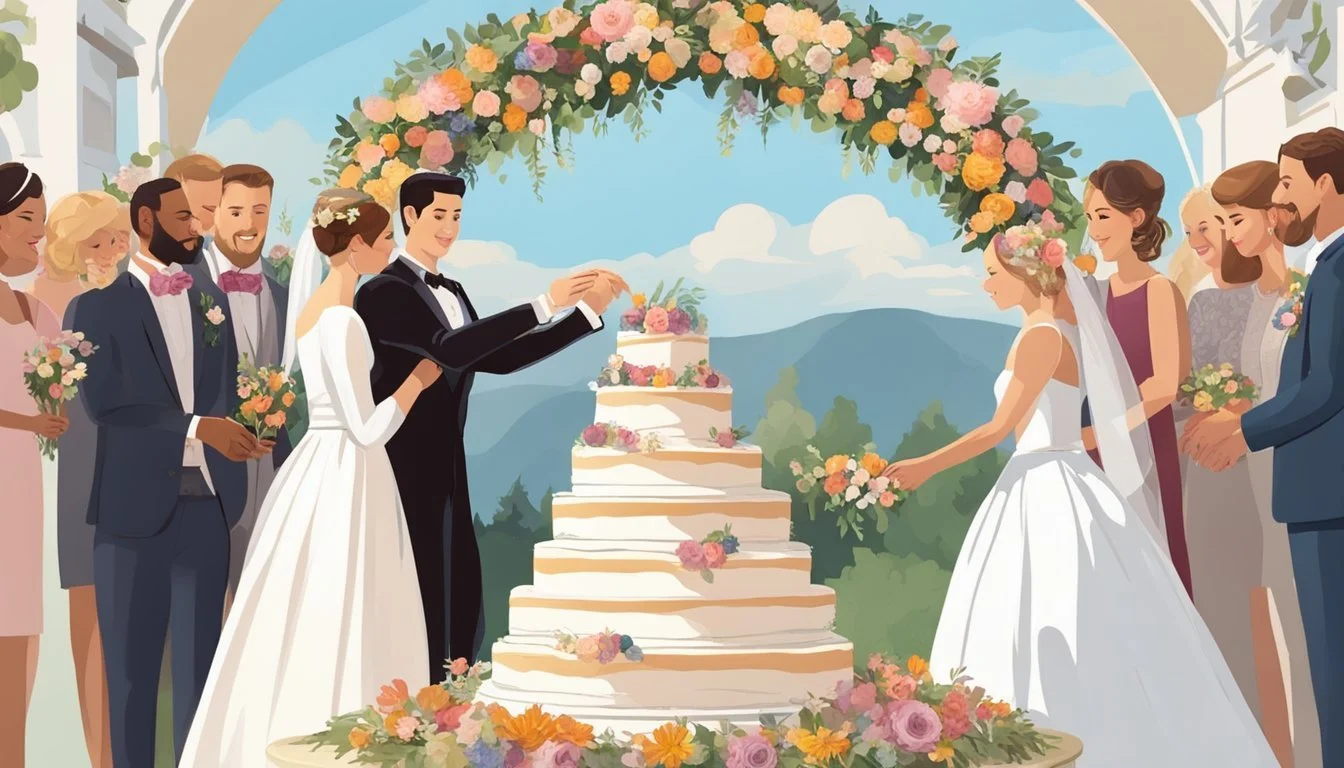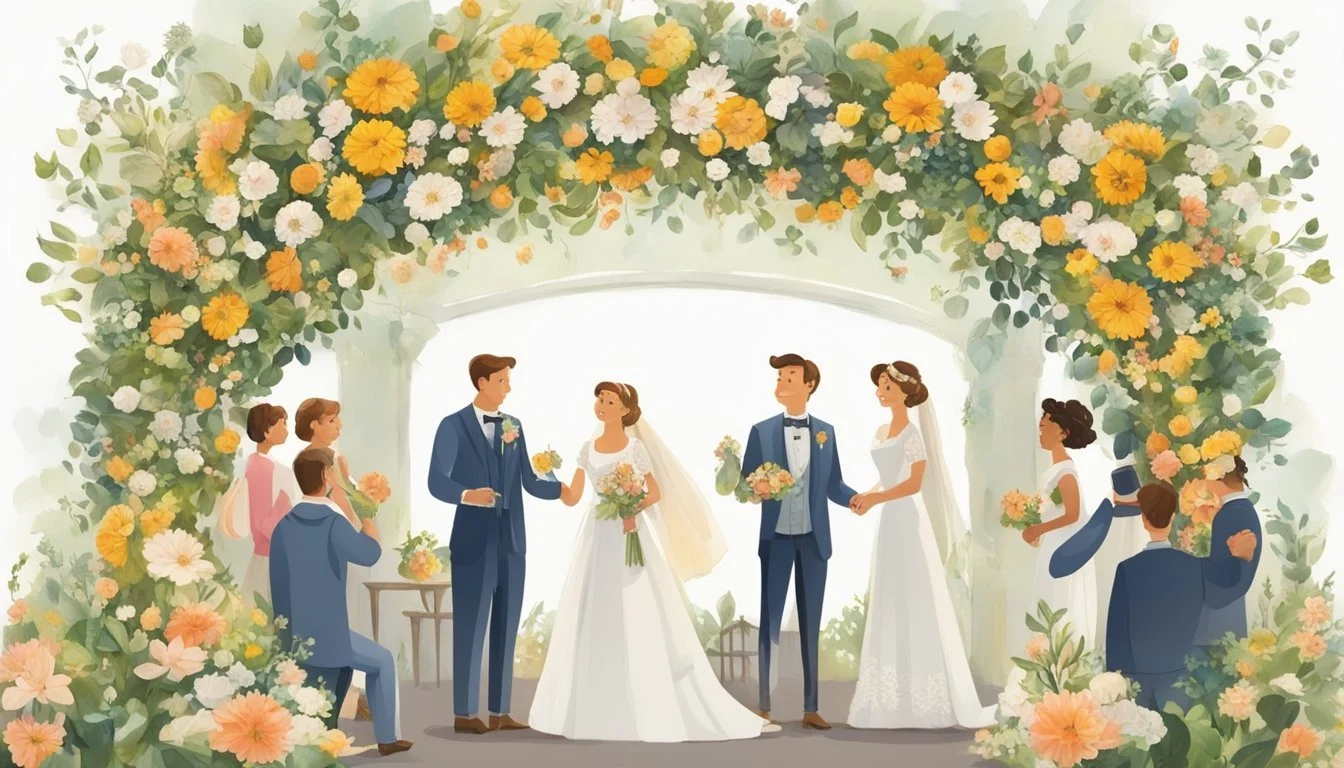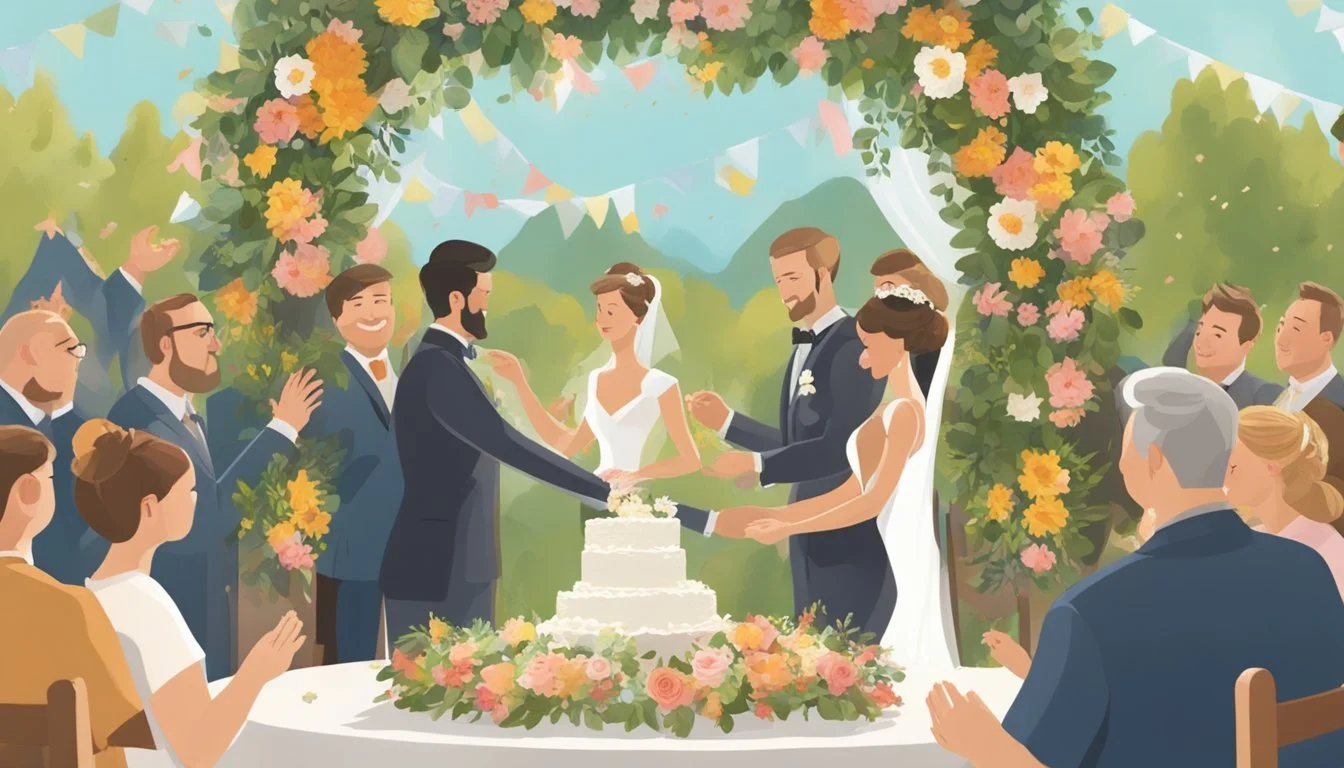German Texan Wedding Traditions
A Blend of Cultures in Marriage Celebrations
German Texan weddings are a unique blend of traditions that reflect both the rich German heritage and the Texan spirit. Settlers from Germany brought their customs and cultural practices to the Lone Star State in the 1800s, creating a distinctive subculture among Texan society. These expatriates carried their wedding customs across the ocean, and over generations, these practices have been interwoven with local Texan rites to create a wedding experience that is both German and uniquely Texan.
One of the core aspects of German wedding traditions is the importance of community and festivity. In Germany, the celebrations can extend well beyond the wedding day itself, incorporating events like the Polterabend, where guests break porcelain to bring luck to the couple's marriage. While not all German Texan weddings might include this particular custom, the value placed on communal joy and the emphasis on an extended celebration have influenced weddings in the German Texan community.
When getting married in a German Texan context, couples often incorporate elements such as the grand entrance, where the father traditionally walks the bride down the aisle, and the couple's first dance to open the festivities. The blend of these German practices with Texan hospitality and warmth creates a wedding atmosphere that is both welcoming and steeped in the customs that German immigrants have preserved and adapted in their new home.
History and Origin of Traditions
The history and origin of German Texan wedding traditions are deeply rooted in both German cultural practices and the adaptability of these customs to Texan life. These traditions reflect the rich tapestry of shared history and the nuances of Texan adaptation.
Evolution of German Texan Wedding Customs
German settlers brought their wedding traditions to Texas in the 19th century, intertwining them with local customs. One notable tradition was Polterabend, where friends and family gathered before the wedding to break porcelain for good luck, a precursor to the rehearsal dinner in modern Texan weddings. Over decades, German influence persisted, with Texan weddings often including the grand march at receptions, a practice reminiscent of the celebratory processions of German festivities.
Influence of German Heritage on Texan Weddings
German heritage has left an indelible mark on Texan weddings. Many couples still incorporate Brautentführung, a playful abduction of the bride, which requires the groom to find and "rescue" her. Additionally, the customary Hochzeitstanz, or first dance, often remains a traditional German waltz. German culture also informs the culinary choices, with a blend of Texas BBQ and German pastries often featured on wedding menus.
Pre-Wedding Events
German Texan weddings are celebrated with unique customs that honor the heritage of both cultures. The pre-wedding events are especially indicative of this blend, featuring traditional German celebrations alongside American-inspired parties.
Polterabend
Polterabend is a German tradition celebrated on the eve of the wedding. This lively event involves guests bringing porcelain items to smash, symbolizing good luck and warding off evil spirits. Guests partake with enthusiasm, as the noise from the breaking porcelain signifies the community's support for the couple's new life together.
Baumstamm Sägen
Baumstamm Sägen, or "log sawing," is a test of the couple's teamwork and is often performed right after the civil ceremony. The couple uses a two-handled saw to cut through a log, representing their first challenge to overcome together. This tradition not only highlights the strength of their bond but also sets a precedent for facing future obstacles as a united front.
Bridal Shower and Bachelor(ette) Parties
Before the day of the wedding, it is common for the bride and groom to have separate celebrations with their friends and family. The bride might have a bridal shower, where she receives gifts and well-wishes for her new home. In contrast, both the bride and groom may celebrate their last days as single individuals with bachelor and bachelorette parties, known in Germany as "Junggesellenabschied." These festivities can range from quiet gatherings with close friends to lively outings.
Wedding Ceremony Traditions
German Texan wedding traditions blend distinct customs from German heritage with Texan hospitality. Within these celebrations, certain practices during the wedding ceremony create a memorable and culturally rich experience.
Civil and Church Ceremonies
In Germany, it is customary for couples to have two separate wedding ceremonies—a civil ceremony and a church ceremony. The civil ceremony often precedes the church ceremony by a few days and is a requirement by law to be recognized as a married couple in Germany. Conducted at the Standesamt (local registry office), it is generally a small, straightforward event. The church ceremony is a more elaborate affair where friends and families gather to witness the couple exchanging vows in a traditional setting, often in a church, bringing into play some of the more time-honored German wedding customs.
Walking Down the Aisle
Unlike many American weddings, during a German wedding ceremony the couple walks down the aisle together, symbolizing their journey to marriage as partners on equal footing. This significant procession displays their united commitment from the very start of the ceremony and emphasizes the couple's relational closeness. They face the aisle hand-in-hand, often maintaining close physical proximity to each other as a representation of their bond.
Tradition of the Veil Dance
The Schleiertanz, or veil dance, is a traditional event during German wedding ceremonies where the bride's veil is used as a symbol and a medium for a jestful yet endearing dance. At the reception, which can be considered an extension of the ceremony traditions, the bride's veil is taken and held up by guests to form a canopy. The bride and groom dance beneath it to the music, and as the night progresses, unmarried women dance under the veil as well. It is believed that the woman who catches the bride's bouquet will be the next to marry, and this belief adds to the playful anticipation during the Schleiertanz.
Attire and Accessories
The clothing and accessories chosen for a German Texan wedding blend cultural symbolism with modern styles, reflecting a rich heritage. The ensemble for the bride and groom incorporates traditional elements from both German and Texan customs, ensuring that their attire is not only elegant but also meaningful.
Traditional German Wedding Attire
In German tradition, brides historically wore black dresses with white veils. This has evolved into a preference for white wedding dresses, typically without sweeping trains, reflecting a blend of old and new. Contemporary German bridal attire often features a classic ball gown design, and the veil may be fingertip-length, especially if the ceremony is in a church.
Dress Color: Originally black, now predominantly white
Train: Typically absent or short
Veil Length: Fingertip or according to venue
Significance of the Bridal Shoes
A distinctive aspect of German wedding tradition is the brautschuh or bridal shoes. Custom dictates that the bride should purchase her wedding shoes with pennies saved up over time, symbolizing thrift and planning. It is also common to hide a penny inside the bridal shoes for good luck and prosperity.
Bridal Shoes: Known as brautschuh in German
Purchase Tradition: Bought with saved pennies
Penny in Shoes: For luck and prosperity
Groom's Attire and Accessories
The groom’s outfit at a German Texan wedding typically includes a tuxedo or a wedding suit, incorporating Texan elements such as a bolo tie or cowboy boots for a regional touch. His accessories are chosen to harmonize with the bride’s attire, creating a cohesive look that honors both German and Texan heritage.
Attire: Tuxedo or wedding suit, with a possible Texan twist
Accessories: Coordinated with the bride's ensemble
Reception and Celebration
German Texan weddings blend traditional German customs with local Texan charm, resulting in unique reception and celebration rituals that honor both heritages. These events feature a combination of hearty German cuisine, customary dances, and spirited activities, which create a festive atmosphere that's emblematic of the couple's cultural pride.
Brautentführung (Kidnapping)
During the reception, guests might witness the lighthearted tradition of Brautentführung, or bridal kidnapping. The bride is taken to a nearby pub or secret location by some of the wedding party, and the groom must find her. This playful event symbolizes the groom's commitment to the bride, ensuring a lively hunt that involves the entire wedding party.
The Wedding Feast
At the heart of a German Texan wedding reception is the wedding feast. Among the staples of this banquet, one will often find a hearty wedding soup (Hochzeitssuppe), which is a nourishing broth with meatballs, vegetables, and noodles or egg custard. The spread typically includes a variety of German food, ranging from sausages to sauerkraut, alongside Texan favorites like barbecue. The meal is likely to culminate with the cutting of the wedding cake, a central dessert that signifies the sweetness of the couple's future life together.
Traditional German Wedding Dances
Dance is a key component of the reception's celebrations, initiated by the couple's first dance. The first dance often takes place to the tune of a waltz, especially the Viennese Waltz, reflecting German influence. Following this, guests participate in a series of traditional dances, which might include lively polkas and schottisches to blend the wedding's dual heritage. It's not unusual for guests to partake in dances around porcelain dishes, which are later smashed to bring luck to the newlyweds—a nod to another traditional activity, Polterabend, known for its raucousness.
Wedding Customs and Symbolism
In German Texan weddding traditions, symbolism plays a crucial role, with certain customs believed to bring good fortune and unity to the marrying couple.
Bouquet and Garter Toss
Bouquet Toss: The tradition of the bride throwing her bouquet to unmarried women is common. It is believed that the one who catches the bouquet will be the next to marry.
Garter Toss: Similarly, the groom throws the bridal garter to unmarried men. The underlying symbolism is akin to the bouquet toss, bringing luck to the one who catches it, indicating he may be the next to wed.
Superstitions and Good Luck Charms
In German Texan weddings, a blend of superstitions adds a touch of cultural uniqueness. A notable example is:
Penny in the Shoe: The bride may place a penny in her shoe to symbolize wealth and ensure a prosperous marriage, rooting back to the idea that this brings good luck for the couple's future life together.
The Bridal Chalice and Unity Candle
The Bridal Chalice (Brautbecher): This chalice is a traditional vessel from which the couple takes their first communal sip, symbolizing their union and shared life.
Unity Candle: The lighting of a wedding candle represents the bringing together of two lives into one, a physical representation of the couple's commitment and new union.
Contemporary Practices and Inspirations
In the evolving landscape of nuptials, German Texan weddings stand out for how they harmonize heritage with modern sensibilities. Couples often weave a tapestry of customs that honor both German traditions and Texan culture.
Modern Interpretations of Traditions
German wedding traditions, with their rich historical roots, continue to influence ceremonies and festivities but are often adapted to suit contemporary tastes. For instance:
Polterabend: In Germany, the night before the wedding is marked by the breaking of porcelain, symbolizing good luck. Today, some couples may choose a less boisterous version of this tradition, perhaps breaking just a single piece of porcelain or integrating a symbolic gesture of unity.
Brautentführung: Historically, this playful "bride kidnapping" involved the groom's friends stealing the bride away, requiring the groom to find her. Modern couples might nod to this tradition with a humorous, scripted "kidnapping" as part of the reception entertainment.
Integrating German and Texan Elements
German Texan weddings often celebrate the fusion of two rich cultures through tailored customs:
Food and Drink: A wedding feast might feature a blend of German delicacies like schnitzel or sauerkraut and Texan favorites such as barbecue or Tex-Mex, often served family-style to encourage a feeling of community.
Music and Dance: Couples might include German folk music alongside country-western tunes. The first dance, a central component in German weddings, can be done to a song that reflects either or both cultural heritages.
By respecting tradition while embracing the present, these weddings exemplify a unique cultural intertwinement that is both deeply personal and broadly appealing.









